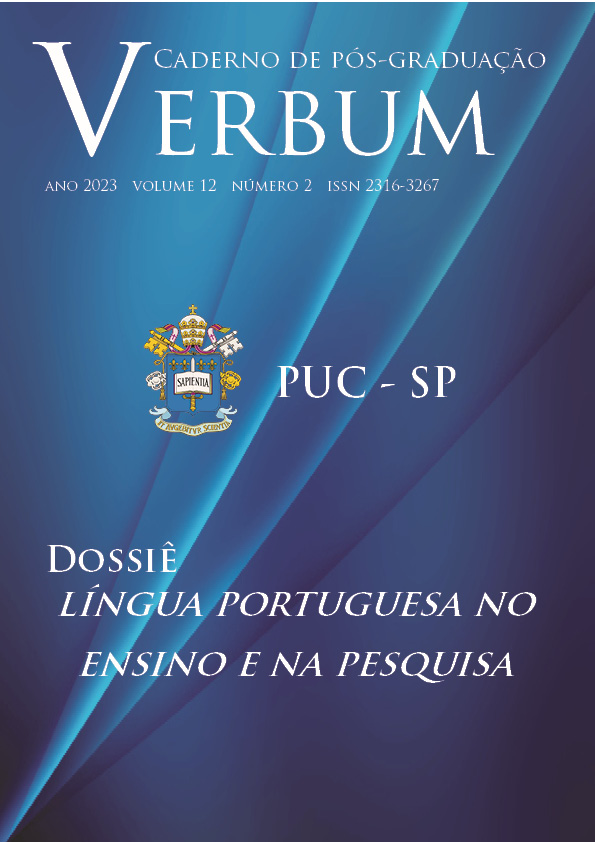FEMINISM IN 19TH CENTURY AMERICAN SOCIETY: A DISCURSIVE ANALYSIS OF THE STORY “The Yellow Wallpaper” BY CHARLOTTE PERKINS GILMAN.
DOI:
https://doi.org/10.23925/2316-3267.2023v12i2p70-84Abstract
The main objective of this work is to analyze features of the feminist discourse in the short story by Charlotte Perkins Gilman, The Yellow Wallpaper, published in 1892, understanding the possibilities of this discourse at the time it was written. In this way, we perceive his contribution to the movement that was strengthened in the 20th century, during the 60s, thus observing the different discursive formations present in the narrative. For this, a research was carried out based on the theories of Franch Discourse Analysis, which include the Association between the works of Michel Pêcheux and Michel Foucault, making it possible to relate the concepts of utterance, subject, history and language with the reflection proposed by the short story. Thorough the reflections of historian Margareth Rago, it is objective to analyze the short story from a current feminist view based on Foucauldian ideas. The research aims to contribute to the construction of a vision that emphasizes the importance of feminism as a movement that can show that its propagation in literature is essential for the progress of the feminist struggle today.
References
BARTHES, R. A Morte do Autor. In: O Rumor da Língua. Trad. Mário Laranjeira. São Paulo: Brasiliense, 1988.
BEAUVOIR, S. O Segundo Sexo. Trad. Sérgio Milliet. 2 ed. Rio de Janeiro: Nova Fronteira, 2009. 2v.
FERNANDES, C. A. O autor: Morte do homem, nascimento do sujeito. Revista da ABRALIN, v. 15, n. 2, p. 19-38, 2016. Disponível em: https://revistas.ufpr.br/abralin/article/view/47881/28817. Acesso em: 21 out. 2020.
FERNANDES, C. A.; C. A.; KHALIL, M. M. G., ALVES JÚNIOR, J. A. (Org.). Análise do Discurso na Literatura: rios turvos de margens indefinidas. São Carlos: Clara Luz, 2009.
FOUCAULT, Michel. Vigiar e Punir: nascimento da prisão. Petrópolis: Vozes, 2011.
FOUCAULT, M. História da loucura: na Idade Clássica. Trad. José Teixeira Coelho Neto. 8. ed. São Paulo: Perspectiva: 2005.
FOUCAULT, M. O que é um autor? Trad. António F. Cascais e Eduardo Cordeiro. 6. ed. Lisboa: Vega, 2006.
GILMAN, C. P. O papel de parede amarelo. Trad. Diogo Henriques. Rio de Janeiro: José Olympio, 2016.
HEDGES, E. R. Posfácio. In: GILMAN, Charlotte Perkins. O papel de parede amarelo. Trad. Diogo Henriques. Rio de Janeiro: José Olympio, 2016. p. 71-105.
ORLANDI, E. Exterioridade e ideologia. Caderno de Estudos Linguísticos, v. 30, p. 27-30, jan./jun. 1996. Disponível em: https://periodicos.sbu.unicamp.br/ojs/index.php/cel/article/view/8637037/4759. Acesso em: 21 out. 2020.
PECHÊUX, M. Semântica e discurso: uma crítica à afirmação do óbvio. Trad. Eni Puccinelli Orlandi [et.al.]. 3. ed. Campinas, SP: Editora da UNICAMP, 1997.
RAGO, M. Foucault, a histeria e a aranha. O mesmo e o outro: 50 anos de História da Loucura, Capítulo, ed. 1, autêntica, v. 1, 2014. p. 235-246.
RAGO, M. ‘Estar na hora do mundo’: subjetividade e política em Foucault e nos feminismos. Interface (Botucatu. Online), v. 23, p. 15, 2019. Disponível em: https://scielosp.org/pdf/icse/2019.v23/e180515/pt. Acesso em: 21 out. 2020.


